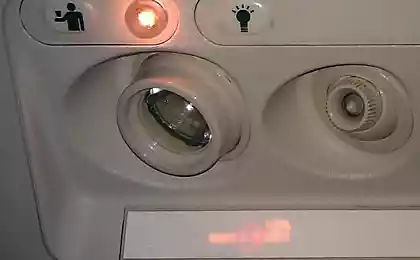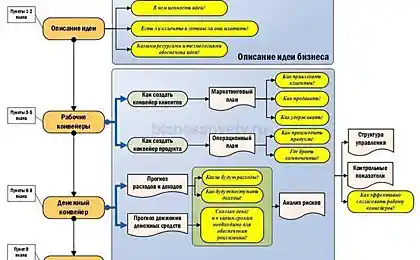468
Hong Kong is struggling with smog
Hong Kong through a variety of measures to clean up the air for a long time tried to reduce the amount of smog, which, according to scientists, cause an estimated 3,000 premature deaths each year. In 25 years, since have been adopted standards for level of contamination, never to achieve a clean air town failed. According to official data last year, there were 175 days of very high levels of air pollution, exceeding the target by more than 2 times in comparison with 2007. The authorities have already devised a new plan to improve the situation, which they hope will achieve its goal or at least improve the situation.
Sixty six million eight hundred sixty thousand ninety seven
The city will be prohibited cars with high emissions, which include 121 300 commercial buses and trucks with a diesel engine, they are the main source of air pollution in the city. For replacement of car owners will be offered subsidies. This practice was already used, but according to the car owners, the amount of the subsidy was insufficient. While the amount was not specified, but the state hopes that all interests are taken into account. "We cannot say that the subsidies had previously been sufficient to car owners made a change," says Huhn Wing-Tat (Hung Wing-tat), associate Professor the Hong Kong Polytechnic University and a member of the community Clean air Asia. "Hong Kong has started the initiative to clean up the air more than a decade ago, but we always feared the opposition and protection of economic interests."
Ultrafine particles (CSS) contained in exhaust gases from diesel transport, and emissions of thermal power plants cause the most pollution and are the cause of 9% of deaths from lung cancer worldwide, according to the world health organization. On the roads in Hong Kong, the average level of nitrogen dioxide, which is a cause of lung cancer, 3 times higher than the permissible level accepted by the who. "Because roads are the greatest danger to the health of the population, we decided to focus our striking force," says Christine LOH (Christine Loh), Deputy Minister of the environment. The government also plans to limit emissions from taxis and public buses.
Thirty four million one hundred forty seven thousand two hundred fifty nine
Hong Kong lags far behind other modern cities in updating their fleet and keeping to the laws on "clean machines". As of October 30, 2012 in Hong Kong 121300 from commercial diesel vehicles over 40% took the auto model and Euro II below. For example, Singapore banned these cars from 2001. Model Euro II emissions produced 2.5 times more than Euro IV.
Not all transport companies have agreed to the upgrade. The main reason is the insufficient amount of subsidy. But some companies supported the initiative and adopted a plan for the next five years to upgrade the Park and install converters to reduce emissions.
Another way to improve air quality will be an update of the assessment air quality and reducing bus routes, says Christine. Hong Kong will introduce new indicators of air quality in 2014, and if the goal is reached, the number of urgent hospitalization will be reduced to 4200, and the lives of the townspeople will last 7400 years annually. Lo said that the government believes the program will reach its goal in 2020.
Source: /users/104
Sixty six million eight hundred sixty thousand ninety seven
The city will be prohibited cars with high emissions, which include 121 300 commercial buses and trucks with a diesel engine, they are the main source of air pollution in the city. For replacement of car owners will be offered subsidies. This practice was already used, but according to the car owners, the amount of the subsidy was insufficient. While the amount was not specified, but the state hopes that all interests are taken into account. "We cannot say that the subsidies had previously been sufficient to car owners made a change," says Huhn Wing-Tat (Hung Wing-tat), associate Professor the Hong Kong Polytechnic University and a member of the community Clean air Asia. "Hong Kong has started the initiative to clean up the air more than a decade ago, but we always feared the opposition and protection of economic interests."
Ultrafine particles (CSS) contained in exhaust gases from diesel transport, and emissions of thermal power plants cause the most pollution and are the cause of 9% of deaths from lung cancer worldwide, according to the world health organization. On the roads in Hong Kong, the average level of nitrogen dioxide, which is a cause of lung cancer, 3 times higher than the permissible level accepted by the who. "Because roads are the greatest danger to the health of the population, we decided to focus our striking force," says Christine LOH (Christine Loh), Deputy Minister of the environment. The government also plans to limit emissions from taxis and public buses.
Thirty four million one hundred forty seven thousand two hundred fifty nine
Hong Kong lags far behind other modern cities in updating their fleet and keeping to the laws on "clean machines". As of October 30, 2012 in Hong Kong 121300 from commercial diesel vehicles over 40% took the auto model and Euro II below. For example, Singapore banned these cars from 2001. Model Euro II emissions produced 2.5 times more than Euro IV.
Not all transport companies have agreed to the upgrade. The main reason is the insufficient amount of subsidy. But some companies supported the initiative and adopted a plan for the next five years to upgrade the Park and install converters to reduce emissions.
Another way to improve air quality will be an update of the assessment air quality and reducing bus routes, says Christine. Hong Kong will introduce new indicators of air quality in 2014, and if the goal is reached, the number of urgent hospitalization will be reduced to 4200, and the lives of the townspeople will last 7400 years annually. Lo said that the government believes the program will reach its goal in 2020.
Source: /users/104























